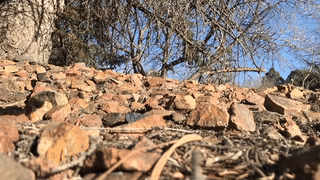The bighorn sheep (Ovis canadensis) named for its large horns is native to North America . Their horns can weigh up to 30 lbs, while the sheep weigh up to 300 lbs, but occasionally exceed 500 lbs. The bighorn sheep rut starts in November.
What does that mean? Glad you asked!
Bighorn sheep rutting is when the males (rams) challenge one another by crashing their horns together. Ouch! How do they withstand the intense headbutts? Ram skulls have two layers of bone above the brain that function as a shock absorber for head-on fighting.
Bighorn sheep prefer alpine meadows, grassy mountain slopes, and foothill country near rugged, rocky cliffs and bluffs. Since bighorn sheep can't move though deep snow, they prefer drier slopes, where the annual snowfall is less than about 60 inches a year. A bighorn's winter range usually lies at lower elevations than its summer range.
Spotting bighorn sheep in Yellowstone is rare. There are only about 200 of them in the park. So, seeing them is quite a thrill. If you want your best chance at running into some, you might try the slopes of Mount Washburn along Dunraven Pass in the summer months, Year-round in Gardner Canyon between Mammoth and the North Entrance, and on the cliffs along the Yellowstone River opposite Calcite Springs; above Soda Butte; and in the backcountry of the eastern Absarokas.
If you'd like to watch a very short video of bighorn sheep rutting, (banging horns together) please click play on the video below. Enjoy! =]:)













0 comments
Please let me know what you think. =]:)